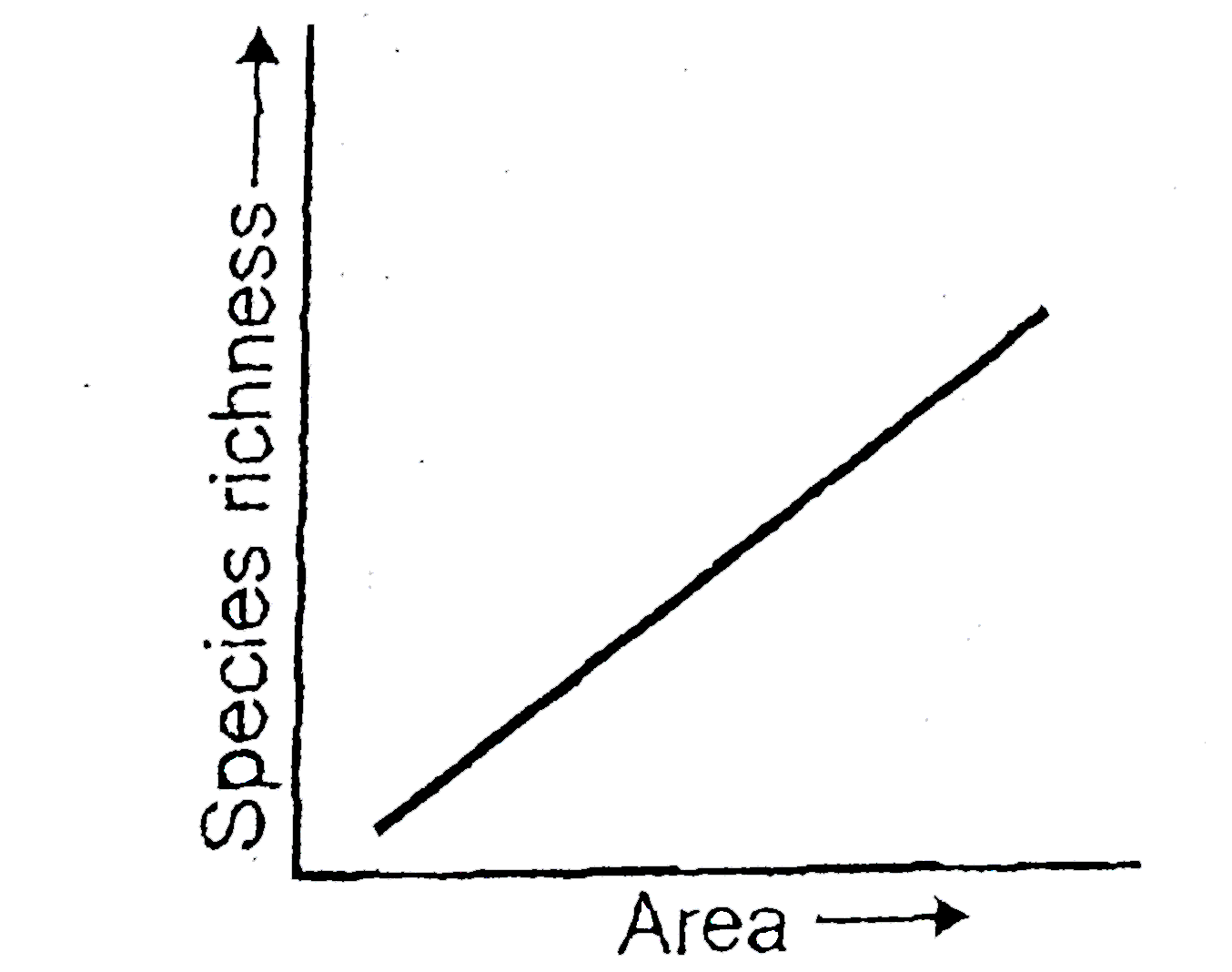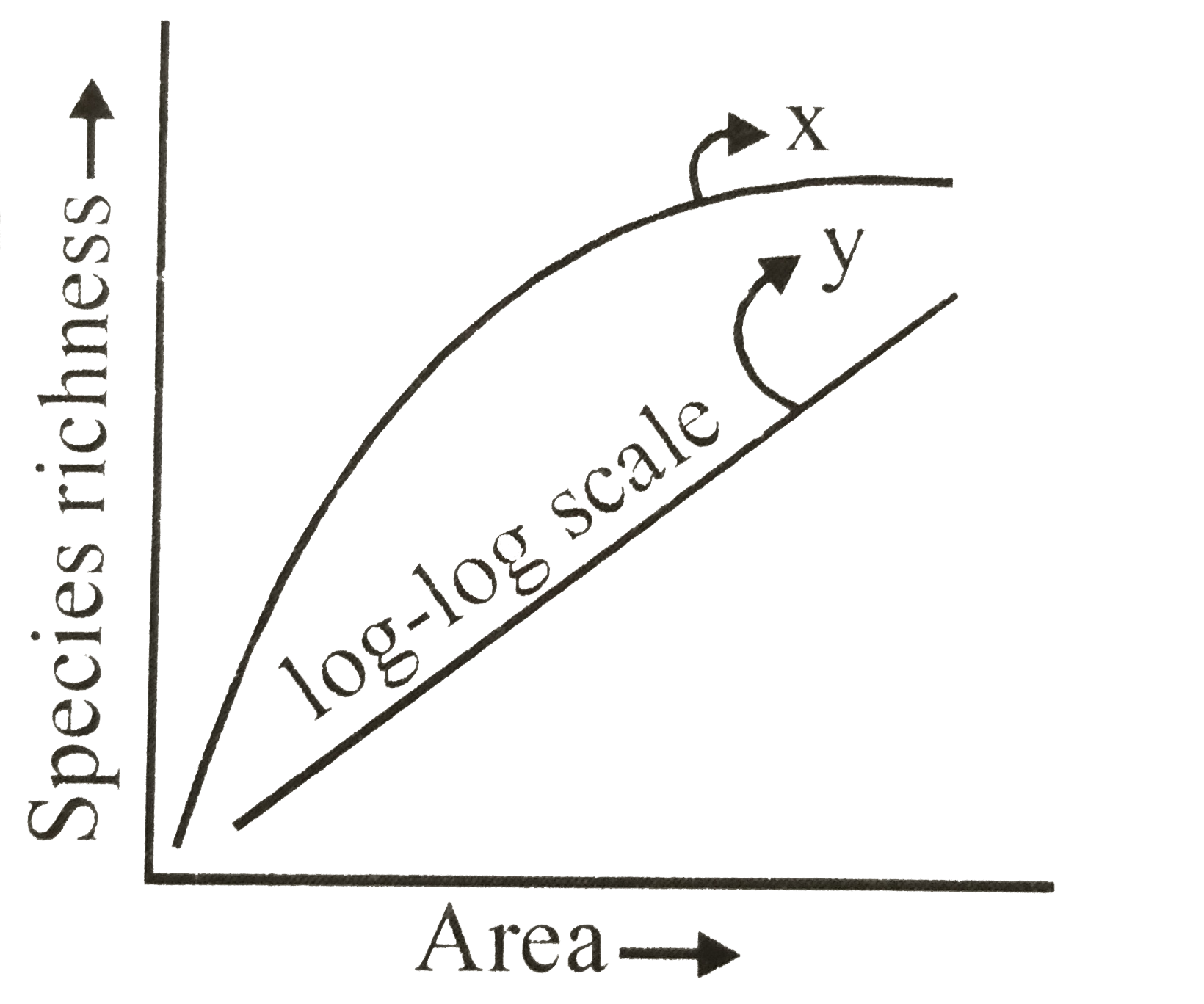The relation between species richness and area is described on a logarithmic scale by the equation [where S = species richness, A = area, Z = slope of the line (regression coefficient ), C= Y - intercept]
log S = log C
log S = Z log A
log S = log C - Z log A
log S = log C + Z log A
The correct Answer is:D
To solve the question regarding the relationship between species richness (S) and area (A) using a logarithmic scale, we can follow these steps:
1. Define Species Richness:
- Species richness (S) refers to the number of different species present in a given area (A).
2. Understanding the Logarithmic Relationship:
- The relationship between species richness and area can be expressed in a logarithmic form. This means that as the area increases, the species richness also tends to increase, but this relationship can be modeled logarithmically.
3. Equation Representation:
- The relationship can be represented by the equation:
logS=logC+ZlogA
- Here, C is the y-intercept, Z is the slope of the line (regression coefficient), and A is the area.
4. Interpreting the Equation:
- In this equation:
- logS represents the logarithm of species richness.
- logC is the logarithm of the constant C, which indicates the baseline level of species richness when the area is at a specific reference point.
- ZlogA indicates how much the species richness increases with the logarithm of the area.
5. Graphical Representation:
- If we were to graph this relationship, we would plot logS on the y-axis and logA on the x-axis. The slope of the line would be Z, and the y-intercept would be logC.
6. Conclusion:
- The final equation logS=logC+ZlogA shows that species richness is positively correlated with area, meaning that larger areas generally support a greater number of species.
- Species richness (S) refers to the number of different species present in a given area (A).
- The relationship between species richness and area can be expressed in a logarithmic form. This means that as the area increases, the species richness also tends to increase, but this relationship can be modeled logarithmically.
- The relationship can be represented by the equation:
logS=logC+ZlogA
- Here, C is the y-intercept, Z is the slope of the line (regression coefficient), and A is the area.
- In this equation:
- logS represents the logarithm of species richness.
- logC is the logarithm of the constant C, which indicates the baseline level of species richness when the area is at a specific reference point.
- ZlogA indicates how much the species richness increases with the logarithm of the area.
- If we were to graph this relationship, we would plot logS on the y-axis and logA on the x-axis. The slope of the line would be Z, and the y-intercept would be logC.
- The final equation logS=logC+ZlogA shows that species richness is positively correlated with area, meaning that larger areas generally support a greater number of species.
Topper's Solved these Questions
- BIODIVERSITY AND CONSERVATION BOOK - CENGAGE BIOLOGY ENGLISHCHAPTER - BIODIVERSITY AND CONSERVATION EXERCISE - Assertion-Reasoning Questions
5 Videos
- BIODIVERSITY AND CONSERVATION BOOK - CENGAGE BIOLOGY ENGLISHCHAPTER - BIODIVERSITY AND CONSERVATION EXERCISE - Archives
22 Videos
- BIOTECHNOLOGY AND ITS APPLICATIONSBOOK - CENGAGE BIOLOGY ENGLISHCHAPTER - BIOTECHNOLOGY AND ITS APPLICATIONSEXERCISE - ARCHIVES (CHOOSE THE CORRECT OPTIONS)
21 Videos
Similar Questions
The relation between specises richness and area is described on a logarithmic scale by the equation [where S = species richness, A = area, Z = slope of the line (regression coefficient ), C= Y - intercept]
View SolutionRelationship between species richness (S) and area (A) represent in the following graph is described by the equation

View SolutionThe relation between species richness and area for a wide variety of taxa (angiosperm plants, birds, bats, freshwater fishes) is a
View SolutionThe relation between species richness and area for a wide variety of taxa turns out to be a rectangular hyperbola. Give a brief explanation.
View SolutionOn a logarithmic scale, the relation between species richness and area is described by the following equation:
logS=logC+ZLogA
In the above equation 'Z' represents
View SolutionWhich of the statement are in accordance with the observation of geographer Alexander von Humboldt ?
I. Within a region species, richness increases with increasing explored area but within a limit.
II. The relation between species richness and area is a rectangular hyperbola.
III. The richness of species decreases with the increasing explored area.
IV. There is no relation between the explored area and species richness .
View SolutionOn a logarithmic scale the correct representation of species area relationship is represented by the equation
View Solution
Study the above graph and answer the following questions -
(i) Identify x and y
(ii) The relation between species richness and area can be denoted as generally
(iii) The value of z lies in range of
(iv) On a log scale the relation between species richness and area is
View SolutionIndicate whether the following statements are true or false :
(i) New York in temperate area has 56 species of birds.
(ii) Tropical biomes unlike temperate ones, are more seasonal, relatively less constant and predictable.
(iii) Relationship between species richness (S) and area (A) turned out to be rectangular hyperboia on a logarithmic scale.
(iv) Slope of regression (Z) is 1.15 for frugivorous birds and mammals in tropical forests of different continents.
View SolutionIn mollusks of New York state, which of these experiences gives you a value between 0.1 to 0.2?
( S = log of species richness, A = log of Area, C = log of Y- intercept in the species richness area curve).
(a) S−CA
(b) S−AC
(c) C−AS
(d) A−SC
View Solution
